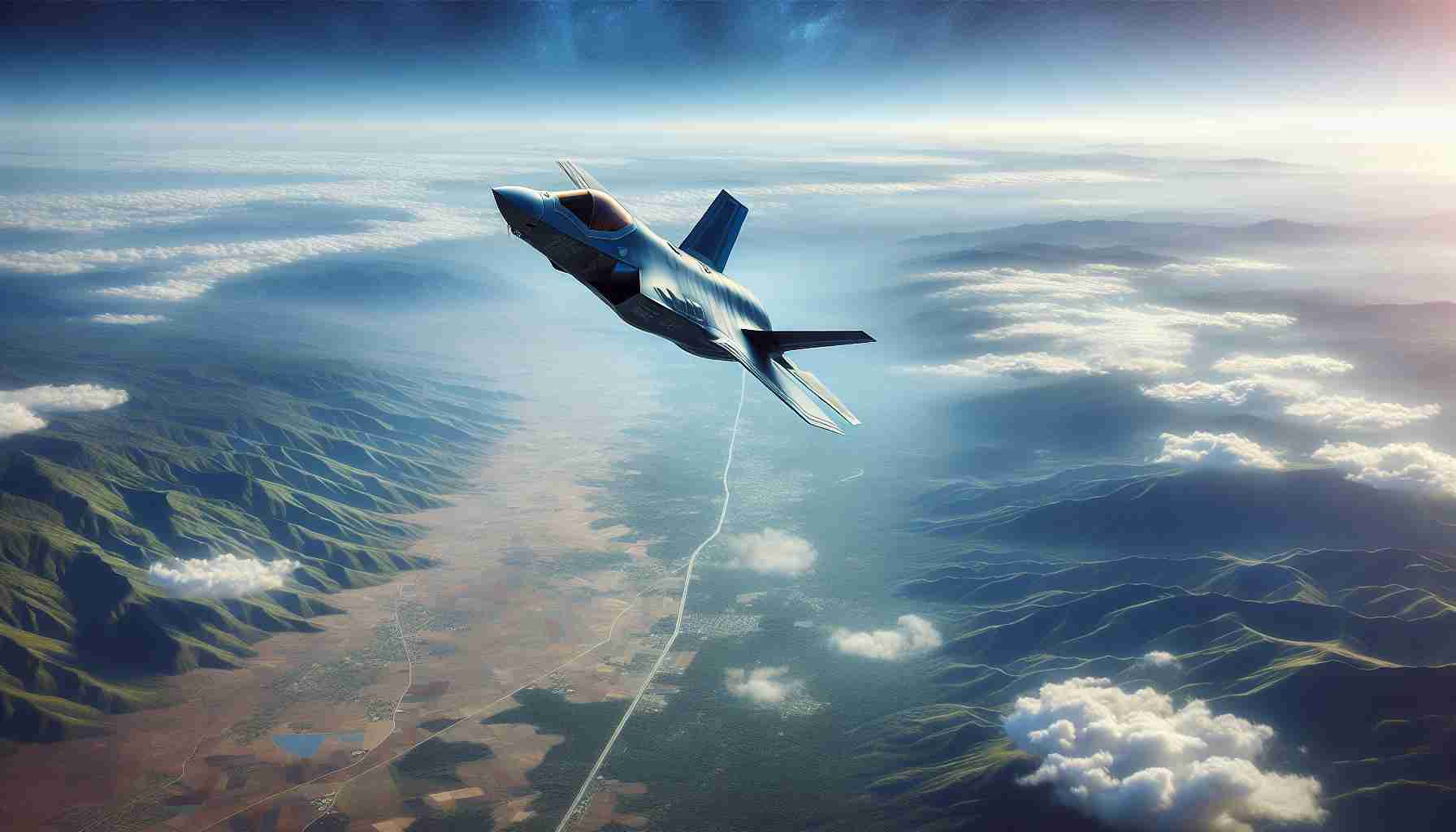In a curious incident that captured widespread attention, a Marine Corps investigation has shed light on how a routine flight turned into an unexpected journey for an expensive F-35 fighter jet. In September 2023, a malfunction led to the pilot ejected from the stealth aircraft, which astonishingly continued on its own for over 11 minutes.
The $100 million jet embarked on a solo flight covering 70 miles after the pilot, facing disorienting weather and experiencing multiple system failures, decided to eject. Fortunately, he landed safely in a driveway, and with the assistance of a local resident, he was able to report the absent fighter jet. The search culminated in the jet’s discovery a day later in the rural expanses of Hemmingway, South Carolina.
The unattended F-35’s journey was possible due to its automatic flight-control systems, which maintained control despite the pilot’s absence. Its stealth technology further complicated tracking efforts, as it vanished from radar momentarily due to low-altitude flight and a malfunctioning transponder.
Before abandoning the aircraft, the pilot dealt with an “electrical event” that knocked out critical systems. Yet backup systems ensured the plane remained operational, even without its pilot. As the investigation reported, the F-35 crash-landed amidst dense foliage, sparing human life but damaging forested areas and nearby crops.
Fortunately, no punitive measures were suggested for the pilot’s decision, highlighting the Marine Corps’ understanding of the challenging circumstances faced.
When High-Tech Goes Haywire: The Curious Case of Rogue Fighter Jets
In an era where technology controls much of our world, the recent incident involving an F-35 fighter jet flying solo raises intriguing questions about the future of autonomous systems and their impact on our lives. This unexpected event has fostered discussions, as this type of scenario affects individuals, communities, and governments on multiple levels.
Fighter Jets with a Mind of Their Own?
The notion of an advanced fighter jet navigating independently for over 11 minutes might sound like science fiction, but it actually happened with the F-35, due to its sophisticated automatic flight-control systems. Designed to ensure safe operations even in adverse conditions, these systems can paradoxically lead to unforeseen situations, such as when a jet inadvertently evades human oversight. For local communities, such incidents could threaten not only security but also underscore the ever-present risk of advanced technology going awry.
What’s the Impact on the Military and Aerial Innovation?
These incidences spark conversations surrounding military preparedness and technological reliance. While the F-35’s autonomy showcases the prowess of modern engineering, it also emphasizes the necessity of perfecting failsafe mechanisms. Countries investing heavily in fifth-generation fighters need to balance cutting-edge innovation with safety protocols. The U.S. Marine Corps’ response to this incident reflects a cautious approach that aims to learn without immediately attributing fault, generating discussion about accountability and responsibility when machines malfunction.
Communities in the Flight Path
For communities near military bases, the eerie experience of witnessing an unmanned aircraft overhead can be unsettling. It reminds residents of the close proximity to military operations and potential mishaps. Such incidents are a stark reminder of the thin line between technological marvel and potential hazard.
Advantages and Challenges: Navigating the Airwaves of Innovation
The development of autonomous features in military hardware offers distinct advantages, such as enhancing safety by taking over if a pilot is incapacitated. However, they also introduce complexities, notably in ensuring these systems function flawlessly in all conditions. The costs involved in maintaining such technology and addressing mishaps like the F-35’s solo flight are substantial.
Interesting Facts and Controversies
– The concept of unmanned military vehicles isn’t new, but the F-35’s adventure has revitalized debates about AI’s role in combat situations.
– Globally, nations interested in F-35 technology may now reconsider or recalibrate their expectations and conditions for purchase or operation.
– An underlying controversy is the ethical dimension of reliance on AI in circumstances requiring immediate human judgment.
How Do We Move Forward?
– How can military systems balance innovation with safety? By thoroughly testing systems in simulated environments and maintaining robust backup protocols, while continuously training pilots to handle unexpected failures.
– Are communities adequately informed and prepared for such scenarios? Increased transparency and community engagement practices could foster trust and preparedness, ensuring residents are reassured rather than alarmed by modern defense systems.
This incident presents a compelling narrative about technology’s role in our daily lives and its potential pitfalls. As we navigate a future increasingly intertwined with artificial intelligence and autonomous machinery, questions about safety, ethical usage, and accountability will remain ever pertinent.
For more information and developments in aerospace technology and military innovation, you can follow Lockheed Martin.







